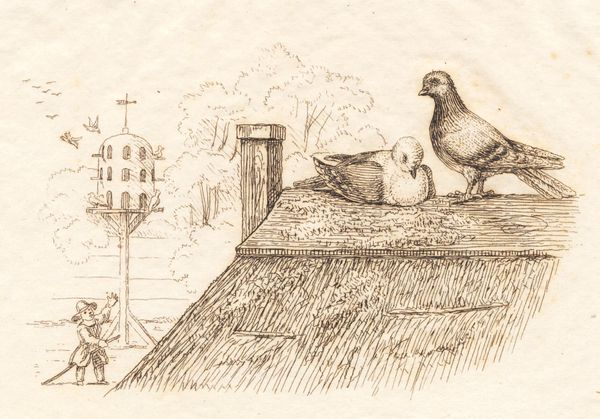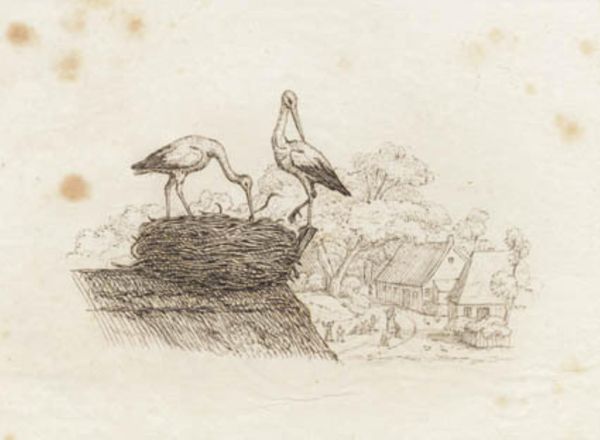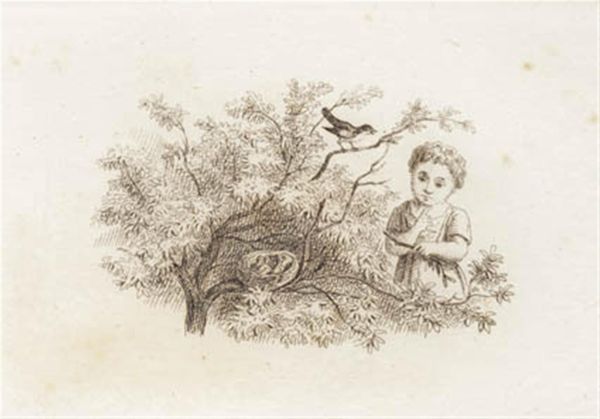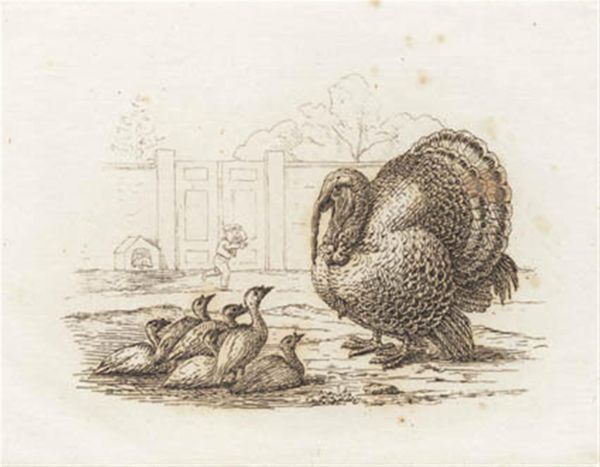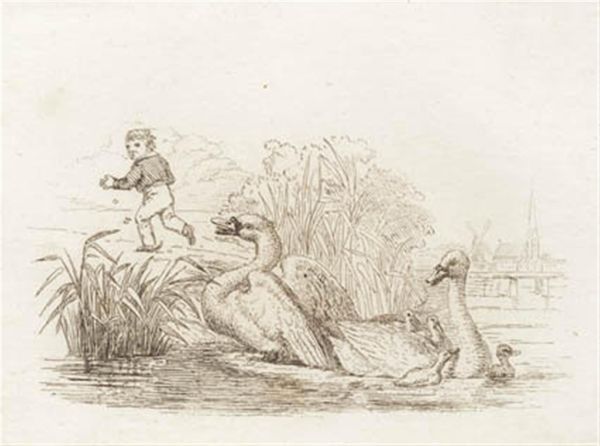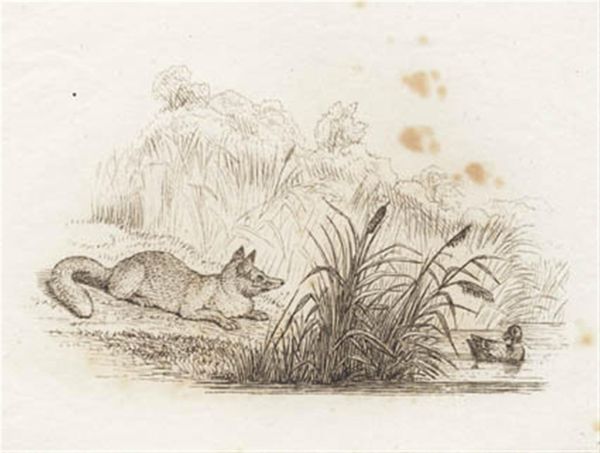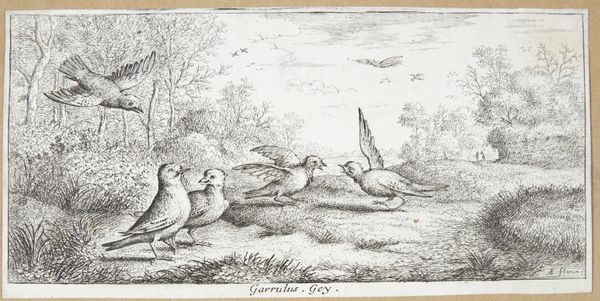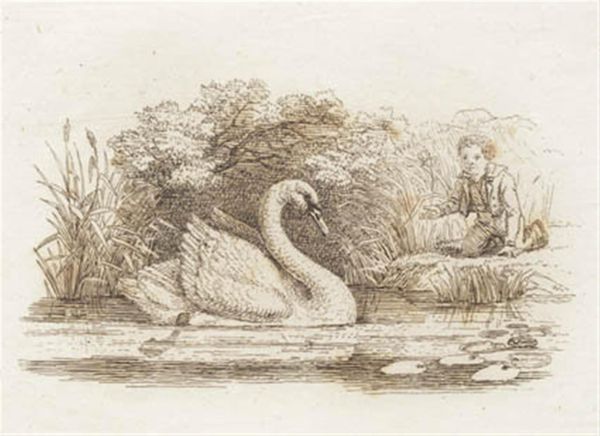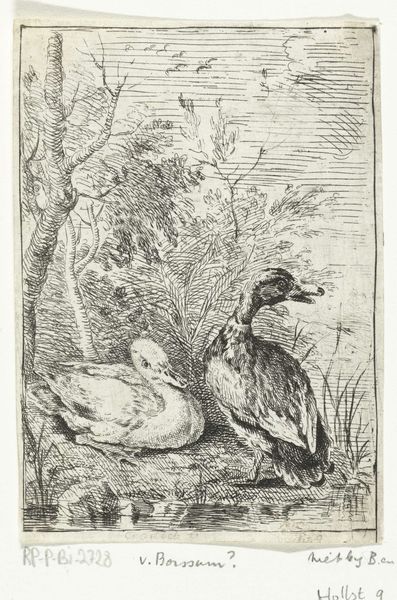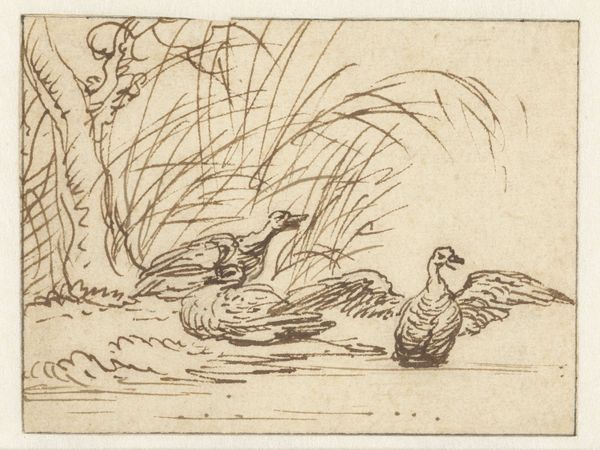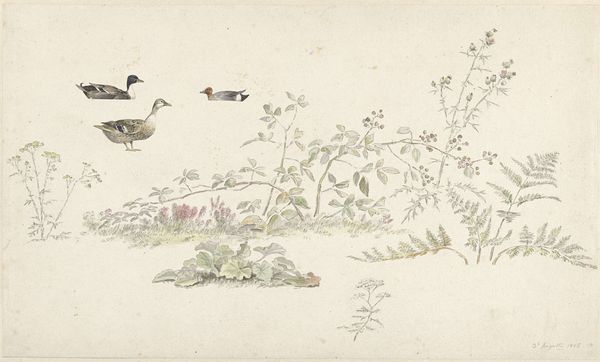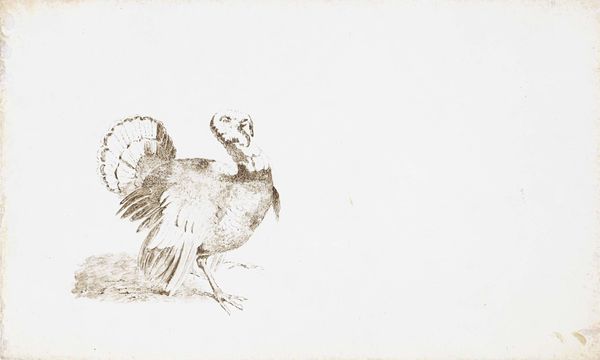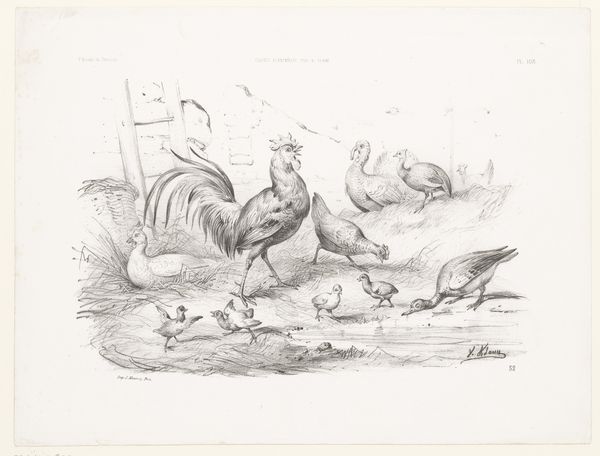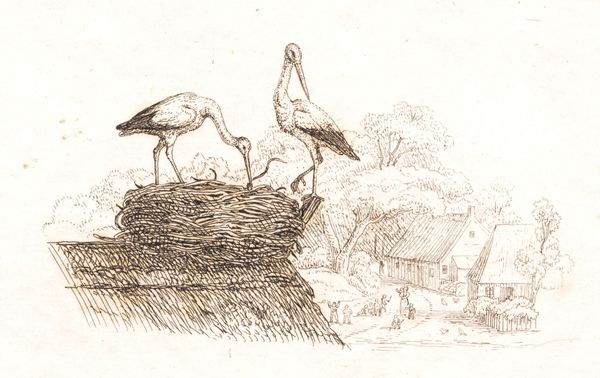
Illustration til "Halvhundrede Fabler for Børn" af Hey 1834
0:00
0:00
drawing, print, pencil, engraving
#
drawing
# print
#
pencil sketch
#
landscape
#
romanticism
#
pencil
#
sketchbook drawing
#
engraving
Dimensions: 142 mm (height) x 258 mm (width) (bladmaal)
Editor: This is an engraving, or perhaps a print of a pencil sketch, by Martinus Rørbye, created in 1834, titled "Illustration til 'Halvhundrede Fabler for Børn' af Hey". It has a very delicate, almost fragile quality. The composition leads the eye from the figure and birdhouse on the left to the birds on the rooftop to the right, but overall it is a bit… unresolved. What do you see as significant in this piece? Curator: The immediate draw for me lies in the contrasting textures achieved solely through line work. Observe how Rørbye distinguishes the smooth feathers of the doves from the coarse thatch of the roof using only varying densities and directions of engraved lines. The overall tonality and delicacy reinforce the themes inherent to Romanticism. Note the almost ethereal rendering of the distant trees and birdhouse, suggesting a nostalgic yearning for nature, which are key. How does the limited tonal range affect your perception of space? Editor: I think it flattens the space, actually, drawing my attention instead to the detailed hatching on the roof, which almost becomes the primary subject despite the birds being higher. Curator: Precisely. It disrupts the conventional illusion of depth, prioritizing surface and texture. That subversion of traditional perspective, redirecting the viewer’s focus to the material qualities of the engraved line itself, emphasizes its structural role in conveying meaning, an emphasis we see in the avant-garde movements that follow Romanticism. Editor: That's interesting. So, looking at the composition, material and its structural use tells a different story than what I originally perceived as just an illustration. Curator: Precisely, appreciating how those components construct a narrative that extends beyond a simple scene into considerations about materiality, perspective, and early explorations into abstraction. Editor: I've certainly gained a new perspective on this piece, looking at its techniques and how the material constructs the artwork. Curator: Indeed. It reveals how form shapes content, challenging our initial assumptions about artistic intent and visual language.
Comments
No comments
Be the first to comment and join the conversation on the ultimate creative platform.
